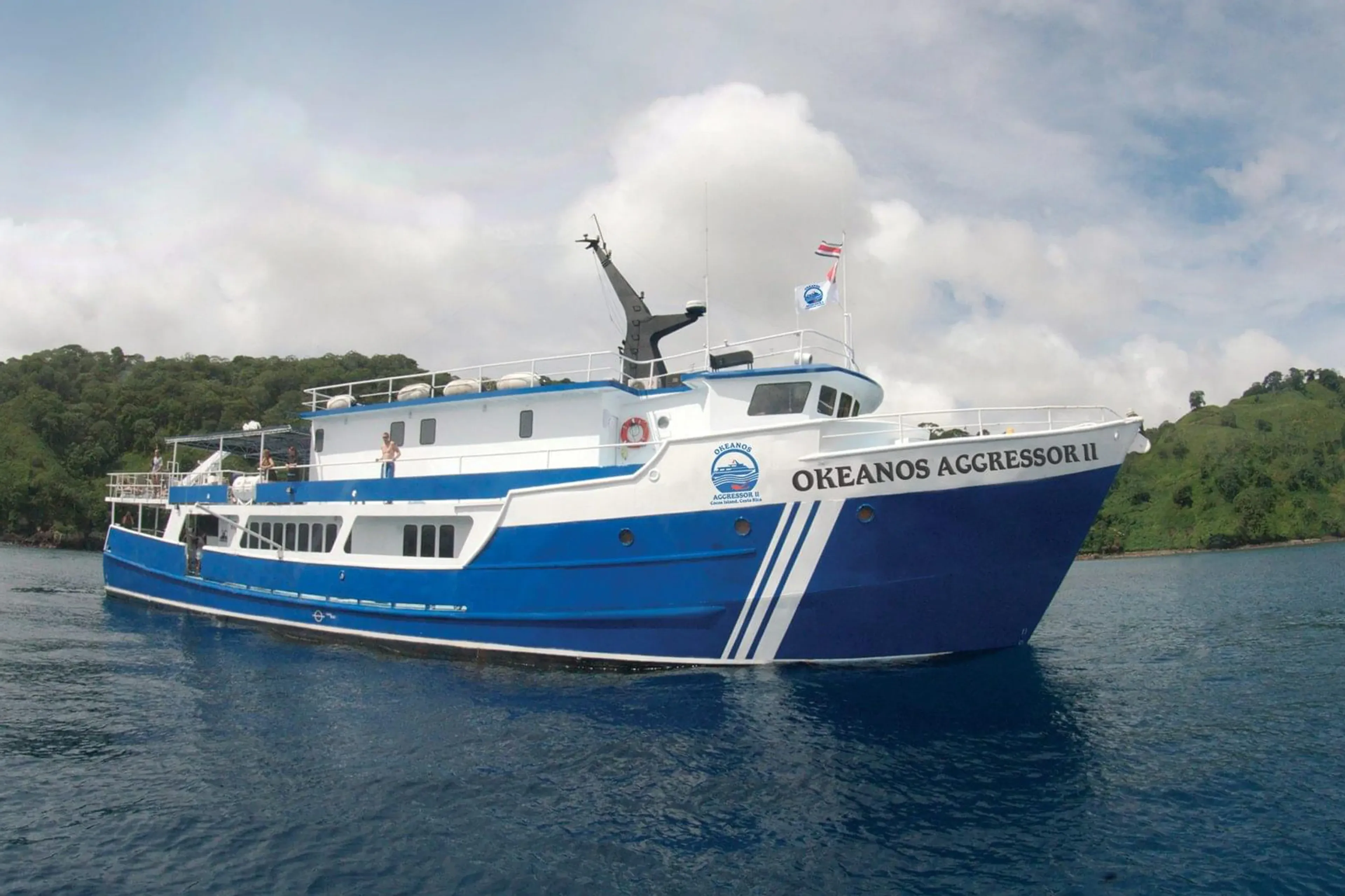Dive in Cocos Island With Hundreds of Sharks!
Why We Love It
Coco's Island is often in the top five of experienced divers' bucket lists! Dives are action-filled with multiple shark species to look at, including white-tip reef sharks, giant hammerhead sharks, tiger sharks, but also dolphins, marble rays, manta rays, and 45 marine endemic species! Coco's Island dive sites have a fantastic topography with seamounts, arches, and caves.
Conservation
The dive operator works closely with Mision Tiburon Costa Rica, a local NGO whose mission is to promote the marine investigation and conservation of Shark and Ray species in the country. Since 2010, the organization has been involved in educational activities with more than 3,000 children from fishing communities.
Who Is It For?
Divers experienced in currents with a minimum of a Level 2 certification. Most sites are deep and with medium to strong currents, attracting big pelagics.
Prices and Dates
Loading...
Dive Briefing!
Marine Life
- A UNESCO World Heritage Site and national park since 1978, Cocos Island is located in the Eastern Tropical Pacific - about 500 km south west of Cabo Blanco, Costa Rica.
- The island was formed during a volcanic upheaval about two-and-a-half million years ago. It is remote, 36 hours from the mainland, and well-preserved.
- Sometimes called the 'Little Galapagos', it is among the Top Ten dive destinations in the world: schooling hammerheads, white tip reef sharks, dolphins, mantas and marbled rays, giant moray eels, sailfish, whale shark occasionally. Large schools of jacks and tuna, silky sharks, silver tips, marlin, creole fish, green turtles, octopus, and the exotic rosy-lipped batfish.
- The terrestrial life at Cocos also exhibits a high number of endemic species.
Dive Conditions
- Season: the diving is great all year long, but there are differences in the seasons
- Dry Season (December to May): calmer sea but also a few less pelagic
- Rainy Season (June to November): a peak time for hammerheads, mantas and whale sharks.
- Currents: strong
- Visibility: around 30 meters (98 ft) in the dry season and 10 to 25 m (30 to 80 ft) in the rainy season
- Water Temperature: 26° to 29°C (79° to 84°F) with occasional thermoclines
- Depth: deep dives mostly (18m+)
Dive Sites
- Open ocean dive destination which is not for beginners - you need at least 25 hours of diving under your belt, and have deep- and night- dive specialties.
- As Cocos Island is 36 hours from the mainland, dive safety is even more crucial. Max depth is 35 meters and maximum dive time is 60 minutes.
- Topography is diverse with walls, spectacular rock formations, arches, seamounts, pinnacles, swim throughs, coral gardens, slopes, sandy bottoms.
- 3 dives per day after arriving to the island, and usually 3 night dives
- Dive sites: Manuelita Coral Garden, Manuelita Outside, Viking Rock, Dirty Rock, Punta Maria, Big Dos Amigos, Small Dos Amigos, Bajo Dos Amigos, Shark Fin Rock, Bait Ball, Submerged Rock, Bajo Alcyone, Silverado, Lobster Rock
The Team
- Dive operator in the area since 1998
- Three liveaboards
- Instruction in English and Spanish
- Nitrox course available on request
- Maximum 10 divers per instructor
Safety Information
-
Equipment Recommended: 3 to 5 mm wetsuit, and the usual dive equipment.
-
Insurance: Both dive insurance and travel insurance are mandatory. We recommend DAN Europe that has plans to cover both - ask us for a quote.
-
Nearest Hyperbaric Chamber: 36 hours away in San Jose.
Visas, Flights, and More!
Visa Requirements
- You must have a valid passport to enter Costa Rica, and a return ticket.
- Most USA, Canadian, EU and Japanese citizens do not require a visa.
- Please check current visa policies that apply for your country: Visit Costa Rica
How to Get There
- You need to be in San José, the capital of Costa Rica, at least one day before the departure of the liveaboard.
- In San José, the pick-up will take place at Park Inn by Radisson, some time between 7:30 am and 2 pm, depending on the time of year.
- You'll take a bus to Puntarenas, the seaport village where you will board the vessel. The drive to get there takes about 2 hours. Boarding will depend on the tide schedule.
- At the end of your Cocos adventure, you will usually disembark the boat at 7:30 am and be transferred back to your hotel in San José or to San José International Airport (SJO). Book flights after 12:30 pm.
More...
- Bring sunscreen, a hat, mosquito repellent, rash guard, and a sweater or light-weight jacket.
Destinations
Right Season
Dive Operators
Booking Fees

